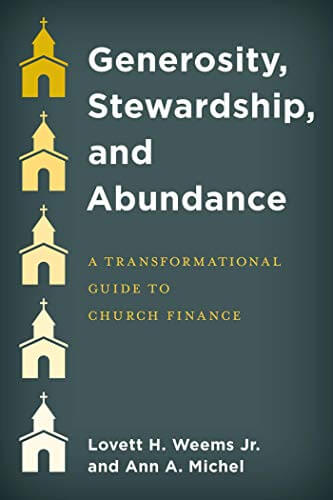Ann Michel of the Lewis Center staff says forming a lay-led stewardship team is key to a successful stewardship campaign and to fostering a culture of generosity within your church. She outlines the need, benefits, and implementation steps for creating such a group.
Who’s responsible in your church for cultivating generosity and encouraging people to give? In many churches the job officially belongs to the finance committee. But finance committees have many other responsibilities and are often populated with people more skilled in financial management than fundraising.
In some churches it’s seen as the pastor’s job. While pastors do have a critical role to play in nurturing generosity, research suggests that when seeking financial support for the church is left solely to the pastor, it can come across as self-interested or create awkwardness. This is often why clergy feel uncomfortable discussing money or asking people to give.
The sad truth is that in all too many churches nobody claims the job, and the consequence is poor giving. Forming a stewardship team or generosity committee composed of lay leaders can be a key factor in fostering a culture of giving. And if your church conducts an annual stewardship campaign or pledge drive, this type of leadership is a critical success factor.
The benefits of building a stewardship team
Beyond assuring that the critical task of promoting generosity isn’t neglected, forming a stewardship team accomplishes a number of other important objectives. First, it encourages laity to learn how stewardship and generosity relate to our faith. Few church members are motivated to delve deeply into the subject until they are given the responsibility to do so. A stewardship committee or generosity team can function as an incubator for those who will lead your congregation in generosity.
When a team of lay leaders is responsible for managing a stewardship campaign, it builds investment in the process and a sense of ownership in the outcome. If the committee is representative of the different constituencies within the congregation, it creates organic connections with potential givers of different ages and interests.
But perhaps most importantly, it puts the pastors in their proper role. Pastors shouldn’t avoid the subject of money or be uninvolved in the commitment process. But the most important roles for the pastor are casting the larger vision and preaching and teaching about the theological aspects of giving, not bearing sole responsibility for giving appeals.
Who should be on your stewardship team?
You’ll want to include as part of a stewardship team some who are already among your church’s most generous givers. Just as you would want persons well-versed in leading Bible study, you want those who give generously and can lead by their example. Also, you may be lucky enough to have folks in your church who’ve done fundraising work either professionally or for other nonprofit organizations. And you likely won’t know who has these skills unless you ask.
But don’t lose heart if you’re starting from scratch or in a small church with a limited talent pool. The number one qualification for a successful stewardship leader is a simple love of the church — someone who is passionate enough about the church’s mission to want to see other people support it.
Getting started
If your church focuses on commitment in the fall, now is the time to assemble a team. Just as with any other recruiting effort, personal invitation is the most effective approach, so set aside time to talk one on one with potential team members.
If your church has never had a stewardship team or a deliberate emphasis on building generosity, the team will need to devote time to educating itself on the theology of giving and strategies for enhancing generosity. The following Lewis Center training resources can provide a running start.
- Optimizing Annual Financial Campaigns Video Tool Kit
- Theology of Stewardship and Biblical Generosity Video Tool Kit
- 50 Ways to Encourage Faithful Giving, a free resource from the Lewis Center
Related Resources
- 50 Ways to Improve Your Annual Stewardship Campaign, a free resource from the Lewis Center
- A Gracious Invitation to Generosity by Ann A. Michel







